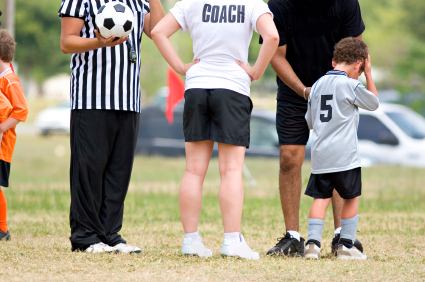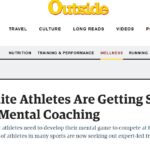I recently completed the online course and certification for SafeSport, a nonprofit whose mission is to end all forms of abuse in sport and ensure that all athletes safe and supported. I found the course to be of considerable value with the many hats I wear in sports:
- Highly educational as a parent and volunteer in several sports
- Illuminating as a professional whose values align with SafeSport
- Affirming as a long-time critic of the toxic youth sports culture that has emerged in recent decades
- Scary as a human being who finds any form of abuse to be inexplicable and beyond unacceptable.
As evidenced by the scandals involving USA Gymnastics and Penn State, Michigan State, and Ohio State, the era of our sports culture tolerating and enabling all forms of abuse is facing a reckoning. Along with this “Come to Jesus” moment, we have seen the attacks on athletes’ mental and physical health and well being and the lifelong scars that abuse leaves on its victims. We can only hope that these extreme forms of abuse of athletes will become a sad memory and a constant reminder to stay vigilant to such misconduct in the future.
Additionally, I had actually thought that “old school” coaching, that employs tactics to punish, embarrass, humiliate, guilt, and shame athletes as tools to improve sports performance was a thing of the past as well. Yet, less severe forms of misconduct and abuse are still evident every day wherever youth sports are played. As an example, I was recently contacted by an attorney who was representing (pro bono) a group of parents whose teenaged daughters played for an elite soccer team that was alleging emotional abuse by several coaches as expressed as “tough” coaching. The days of coaches yelling, insulting, intimidating, demeaning, and demoralizing their young charges aren’t over. Neither is the face-mask grabbing, shoving, two more laps, and no water strategies for making athletes supposedly tough and successful.
What I find remarkable is that any coach, much less a coach who is also a parent, would think that such behavior is not only acceptable, but also effective. Sadly, there are too many stories of high-profile athletes who, though finding success, suffered from the harsh (literal and metaphorical) hand of their parents or coaches. These types of parents and coaches include Roy Jones Sr., Mike Agassi, Jim Pierce, and Marv Marinovich, Bobby Knight, Billy Martin, and Woody Hayes.
Sadly, the on-the-field successes of the athletes raised and coached by those who used the “make ‘em tough” approach to athlete development leads some parents and coaches to believe that this same approach will make their own kids great. And, admittedly, it can work with some athletes. But the cost of such treatment in terms of mental health, relationships, and long-term performance, success, and well being are harsh.
Athletes Who Feel Unsafe
At the heart of the mistreatment of athletes is that it causes them to feel unsafe. How any parent or coach could believe that a persistent state of feeling in danger could possibly enhance performance is beyond me. There’s no doubt that a little fear can be motivating in the short run, but ongoing threat will take its toll at many levels of performance and functioning.
Physical or emotional abuse from parents or coaches trigger in athletes their primitive survival instinct and the accompanying fight-or-flight-or-freeze reaction. In some cases, athletes fight and become successful, but more often than not, they flee (by not trying or quitting) or freeze (by choking in competition).
Feeling unsafe causes physiological changes that interfere with optimal performance. A racing heart, excessive adrenaline, muscle tension and bracing, short and choppy breathing, and loss of coordination all are physical responses that aren’t conducive to high performance.
When athletes feel unsafe, psychological changes that are harmful to sports performance also occur. Motivation declines because, when in “threat mode,” the primary drive is for athletes to protect themselves and avoid the threat. Confidence plummets because feelings of danger convey the message to athletes that they aren’t capable of overcoming the challenges they face. Focus is nearly impossible to sustain because athletes’ concentration is constantly being pulled away from how they can perform their best and onto the threat itself, namely, the coach, the parent, or the consequences of failure.
When athletes feel threatened, their emotions turn against them as well. In some cases, they get angry which can elevate performance in some situations when aggressiveness and reckless abandon are required. However, undirected anger can lead to a loss of physical and emotional control, technical mistakes, tactical errors, penalties, and the desire to harm opponents. In other cases, athletes respond to feeling unsafe with fear, frustration, sadness, anxiety, and despair. These emotions, in turn, increase the volume on the feelings of embarrassment, guilt, humiliation, and shame they feel for disappointing their parents and coaches and letting down their teammates, friends, and family.
The accumulated weight of athletes feeling unsafe in their sports performance is obvious and painful. Imagine athletes donning 50-pound weight vests just before they walk onto the field of play. How will they feel? Heavy and weighed down. How will they perform? Poorly, to be sure. Well, when athletes feel unsafe, parents and coaches are forcing them to put on a figurative weight vest that has an even greater negative impact. They are very unlikely to perform their best. They don’t enjoy themselves. They feel terrible. And they will very likely lose interest in continuing to participate in sport.
By the way, parents and coaches don’t have to overtly mistreat their athletes by, for example, yelling, shaming, or hitting them, to cause them to feel unsafe. Athletes can feel unsafe when parents place unreasonable expectations on them or coaches constantly talk about “Winning isn’t everything; it’s the only thing.” The threat of unfulfilled expectations and disappointing their coaches puts athletes in a persistent position of feeling unsafe.
Athletes Who Feel Safe
In some ways, the notion of athletes who feel safe lies at the foundation of helping them to perform their best and achieve their sports goals (not to mention developing into healthy and well-adjusted people). Athletes may be incredibly fit, technically capable, and tactically sound, but without feeling safe, it’s unlikely they will perform up to their abilities for the reasons I described above.
The benefits of athletes feeling safe are immense within their sports experience. Physically, they feel relaxed and comfortable. They’ve got good muscle activity, respiration, and blood flow. In sum, their bodies are prepared to perform the best they can.
Psychologically, these athletes are motivated, confident, and focused. Because they feel safe to start, they are willing to throw themselves into their sport with confidence, commitment, and courage and without fear, doubt, or worry.
Emotionally, athletes who feel safe experience determination, hope, excitement, joy, pride, inspiration, and satisfaction in their sports lives. These “feel safe” athletes can take appropriate risks, perform as well as they can, enjoy their sports experience fully, and, most importantly, gain the wonderful life lessons and life tools that sports can provide them.
And what athletes who feel safe gain outside of sports is even more dramatic as they develop as people. They have the opportunity to become confident, self-reliant, resilient, and happy adults.
Recommendations
- Every parent, coach, or volunteer involved in sports should take the SafeSport course. It only costs $20 and will increase your awareness, deepen your understanding, and be a real eye opener for what it means for athletes to feel unsafe and safe.
- Take a look in the mirror and ask yourself, as a parent and/or coach, in what ways you might make your child or athlete, respectively, feel unsafe.
- Consider practical ways you can help athletes feel safe.
- If you see a parent, coach, or other person causing athletes to feel unsafe, report them!
To learn more about how to raise successful, happy, and value-driven young athletes and people, read my Parenting blog. Want to be the best sport parent you can be? Check out my Prime Sport Parenting 505: Raise Successful and Happy Athletes online course.





